As a British village crumbles into the sea, a family holds onto a home that can’t be saved
Nicola Bayless and her younger daughter, Violet, 10, walk along a recently eroded section of the cliffs in Happisburgh, England. The cliff’s soft clay and sand are especially vulnerable to erosion from the North Sea.
It’s a blustery winter day on the English coast and Nicola Bayless is walking along the Happisburgh cliffs with her daughter Darcy, surveying the damage after a recent storm.
“My God. I haven’t seen it for a few days,” she says, and points to a cascade of orange clay that had recently sheared off the cliff and onto the beach below.
“All this is part of the cliff that used to be,” she says. “It’s taken away quite a lot.”
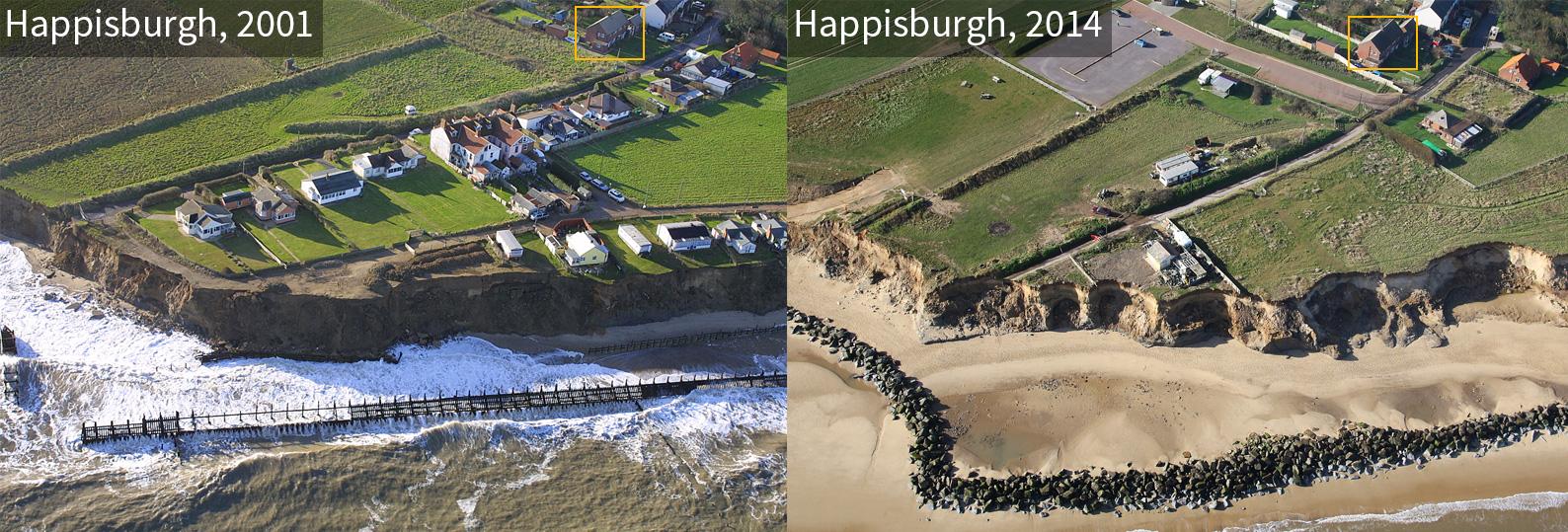
The sky and sea are the same shade of gray, and Darcy Bayless, 15, keeps huddling into her jacket for warmth.
“The last time I was here there was a full ramp, so you could walk down, and there was loads of people coming down to come and see all the cliffs,” Darcy says.
Related: The UK's offshore wind boom is great for the climate. But what about the fish?
That ramp down to the beach washed away this winter. A footpath worn into the grass that used to hug the edge of the cliff now leads to nothing, ending abruptly where a piece of cliff has fallen away.
“I’m used to everyone going on and on about the erosion down here, but when I saw it like this, I was like oh, this is different,” Darcy says.
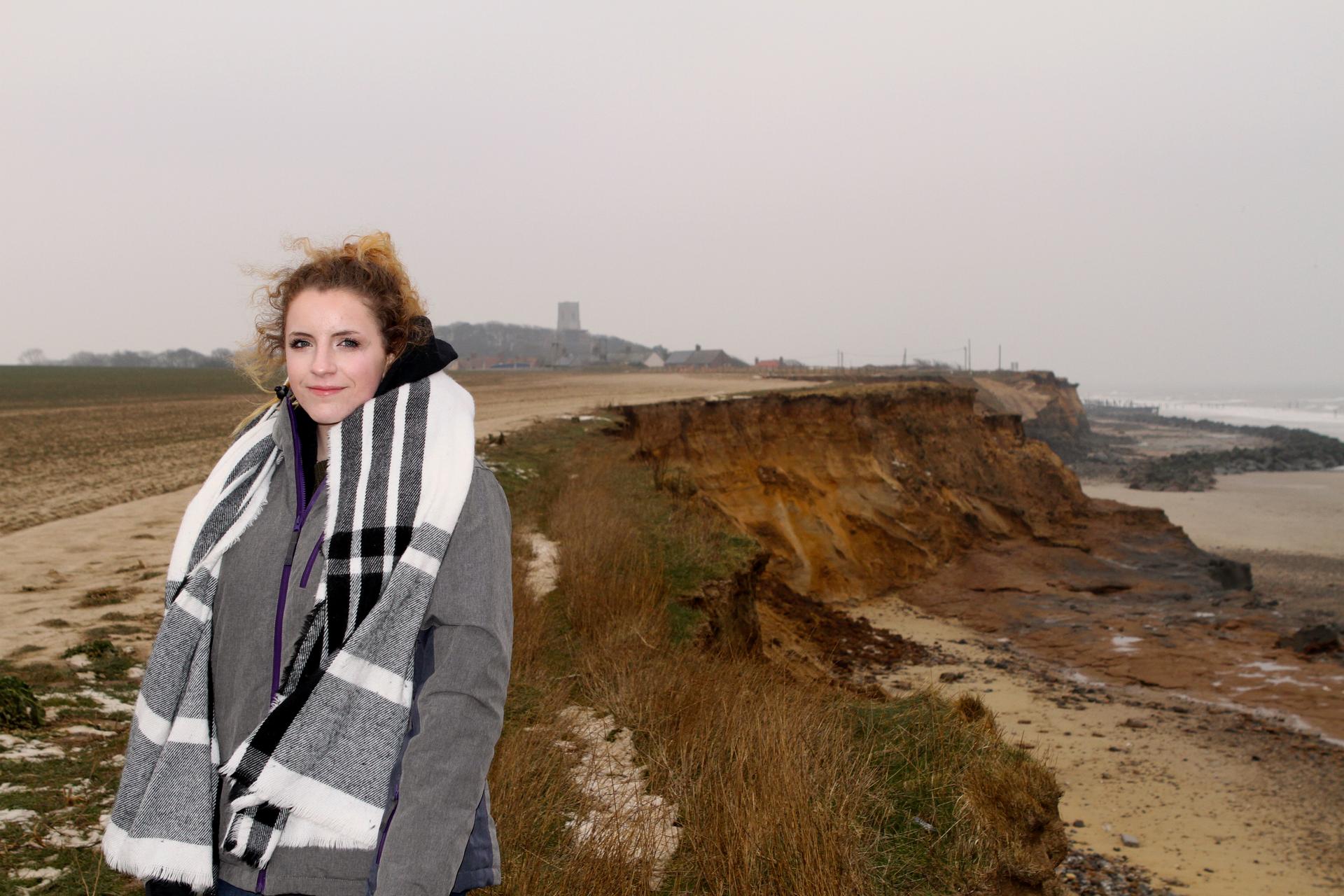
A historic village crumbling into the sea
Happisburgh, population roughly 1,400, is a historic village on England’s Norfolk coast best known for how locals pronounce its name (it’s haze-boro, not hapis-burg), its iconic red-and-white striped lighthouse, and the fact that it’s crumbling into the sea.
It’s not alone. Across England, the Environment Agency estimates that roughly 2,700 homes and businesses will be vulnerable to coastal erosion in the next 50 years.
The Baylesses’ house will be gone in that timeframe. They live within sight of the Happisburgh cliffs, little more than the length of a football field away, in a 1950s-era, brick two-story house. Nicola Bayless says the walls shake when pieces of the cliff fall off.
Related: Europe’s investment in offshore wind is paying off — for the US
Their neighbor Bryony Nierop-Reading made national news several years ago when she refused to leave her bungalow, even when the bathroom hung over the edge of the cliff. Her house was finally demolished in 2013, the year after nine of her neighbor’s homes met the same fate before they could fall into the sea.
Today, visitors pass the Bayless’s house when they walk from the famous cliffs toward the quaint village center to climb the tower of the 15th-century church, or look at the historic thatched roof cottages.
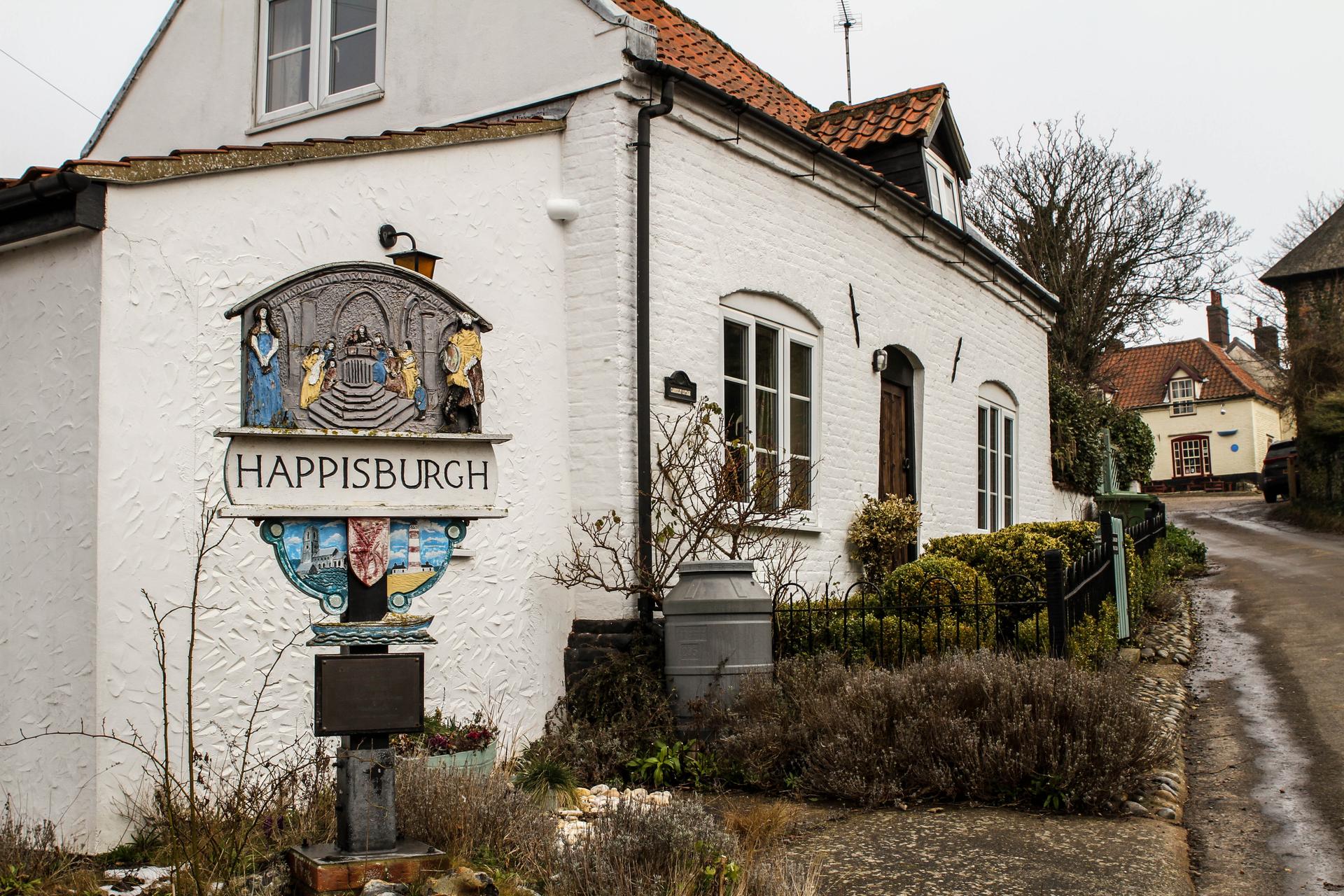
“I’ve had people come up to me and go, ‘So how long have you lived here, and how long have you got left?'” says Darcy Bayless. “I just tell them, ‘I don’t know now,’ because it’s so unpredictable.”
In 2000, shortly before the Baylesses moved to Happisburgh, Nicola says surveyors estimated the house they live in now had about 150 years left. Now she estimates it has 25, maybe less.
Related: Offshore wind projects breathe life into struggling UK ports
A coastal erosion risk map published in a 2012 local planning document puts the Baylesses’s house in a swath of coastline expected to be at risk of erosion by 2055. But local experts point out that the map is old, and hasn’t been updated to reflect erosion after recent major storms. Several properties named in that document as at risk of erosion by 2025, are gone already.
“In the last 26 years that my wife and I have been in this village,” says Clive Stockton, the landlord at the village pub and a local expert on coastal erosion, “we’ve lost 36 houses, four businesses, the coast guard, the lifeboat [station], the public car park, the public toilets, and virtually all the beach access.”
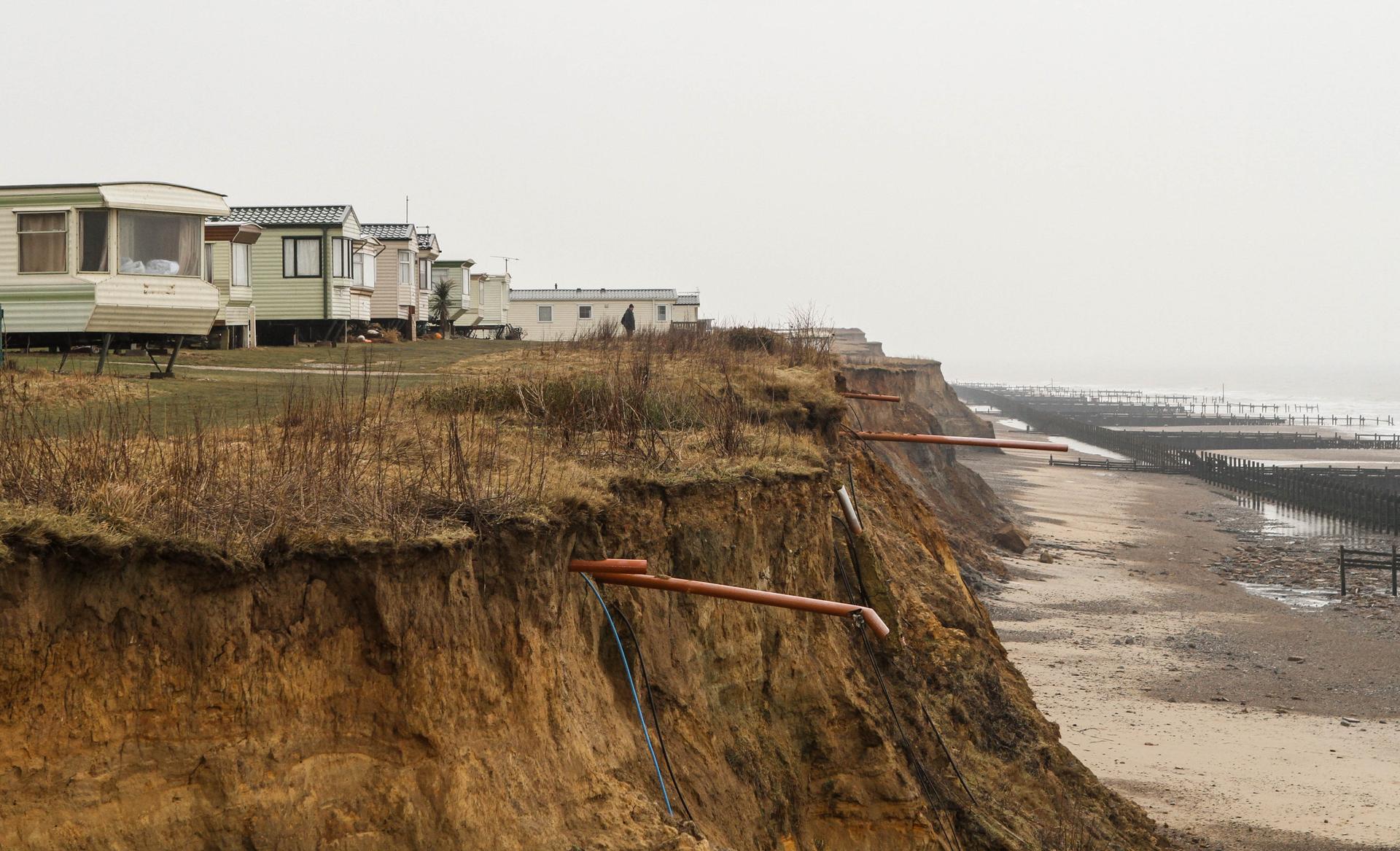
Erosion in Happisburgh is a long-term problem
The North Sea has been eating away at Happisburgh’s cliffs for 5,000 years. Estimates put the average historical rate of erosion at somewhere between one and three feet per year, according to Catherine Pennington, a geologist with the British Geological Survey.
That erosion sped up in the 1990s, after timber defenses erected along much of the coastline following deadly flooding in 1953 started collapsing in Happisburgh and weren’t replaced. That left the cliffs in the village vulnerable.
Related: Why the UK has an easier time than the US divorcing from coal
“At Happisburgh, the cliffs are very soft,” Pennington wrote in an email. “You can dig into the upper sand layer with your hands — and the cliffs face northeast, meaning they are vulnerable to storms and sea conditions from the north.”
Clive Stockton puts it more bluntly. “We are being torn to pieces,” he says.
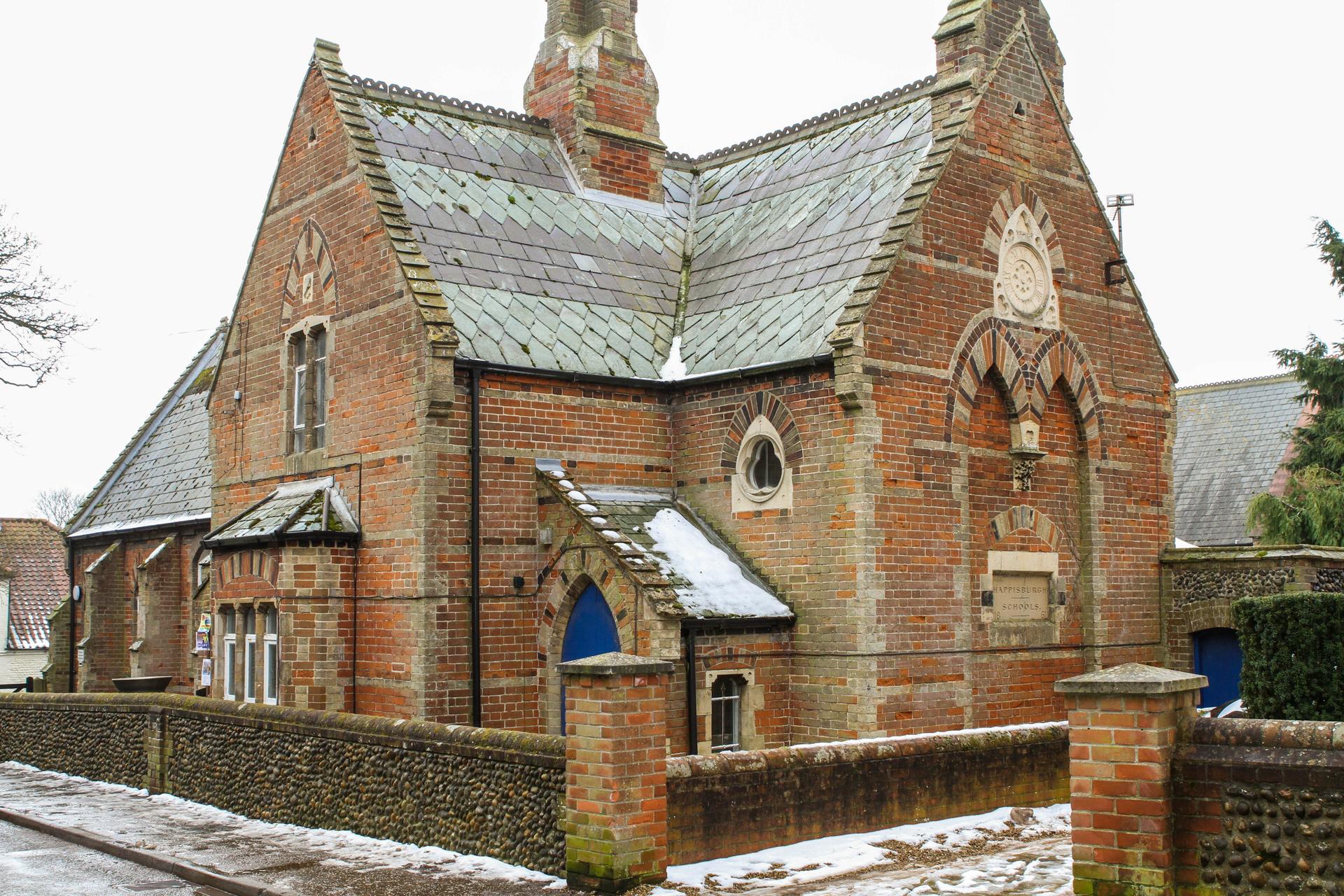
Controversial new management policies are more sustainable, but leave some feeling abandoned
Since the 1990s, England’s coastline has been sorted into categories that guide management policies for stretches of the shore. Between 2015 and 2021, the UK Environment Agency says it is spending $3.7 billion on projects in England — both inland and on the coast — to reduce the risk of flooding and coastal erosion. Without these protection measures, it says up to 28,000 properties would be at risk from coastal erosion in just 50 years, instead of about 2,700.
Under these management plans, some pieces of the coast are designated for protection from erosion with artificial defenses under a so-called “hold the line” approach that aims to keep the shoreline at its current location.
But the government says it can’t protect the entire coastline. Mainland Great Britain — including England, Scotland and Wales — has more than 11,000 miles of shoreline and rising seas. Increased storminess fueled by climate change is expected to make erosion and flooding worse.
Related: Weather 'bombs' and the link between severe winters and climate change
So for long stretches of the coast, government policy dictates that coasts be allowed to erode, either unabated, or managed in a way that allows local communities time to adapt — a policy that’s called “managed realignment.”
“We help our partners to work with nature to address coastal change, such as through managed realignment of the coastline and creation of vital coastal habitat,” says Andrew Sissons, deputy director for flood and coastal risk management at the Environment Agency.
Those managed realignment plans aim to be more sustainable in the long-term and often include removing existing defenses and flooding coastal land to create natural buffer areas like salt marshes, mudflats, or in the case of coastal erosion, allowing cliffs to erode to a more sustainable point inland.
Until recently, the policy in Happisburgh was to hold the existing line. But new sea defenses for the village didn’t meet the cost-benefit analyses required for federal funds, so Happisburgh’s collapsed defenses were never substantially replaced.
“There is no way that a rural community can get any substantial help with sea defense,” says Stockton, who spent years working on coastal erosion issues in local government.
In 2012 after years of controversy, the local district council and the UK Environment Agency adopted a policy of managed realignment for Happisburgh.
The district council has been able to raise funds for short-term measures to attempt to slow erosion and adapt to it, including placing rocks on the beach and re-building a parking lot and public bathrooms near the beach access. But in the long-term, many residents will simply be expected to move off the coastline.
The government determined it would be technically difficult to build new permanent defenses, and although an estimated 20 to 35 homes and businesses would be lost by 2105, “these are not sufficient to economically justify building new defenses.”
A home isn’t just a house, it’s full of memories
The Baylesses understand that it’s not practical to protect the entire British coastline from erosion. But for families like them, this issue isn’t just a matter of government policy, fiscal responsibility, and rebuilding natural habitats. It’s the difference between preserving their home and eventually losing it.
“Sometimes I do feel like they [policy makers] don’t care,” says Darcy Bayless. “So much of my childhood’s already disappeared on the cliffs.”
That includes the village’s lifeboat station, one of the first places Darcy was allowed to walk alone as a kid. More places will follow. Including, eventually, her house.
“It’s kind of upsetting to know that all of this will be gone by the time that I get anywhere close to having a family of my own,” says Darcy. “Where we’re sitting right now won’t be here.”
That’s especially troubling to Darcy, because her father died suddenly of an aneurysm in their home two years ago. And unless coastal protection policy changes, the 15th-century church, where his funeral was held, is also likely to disappear within her lifetime.
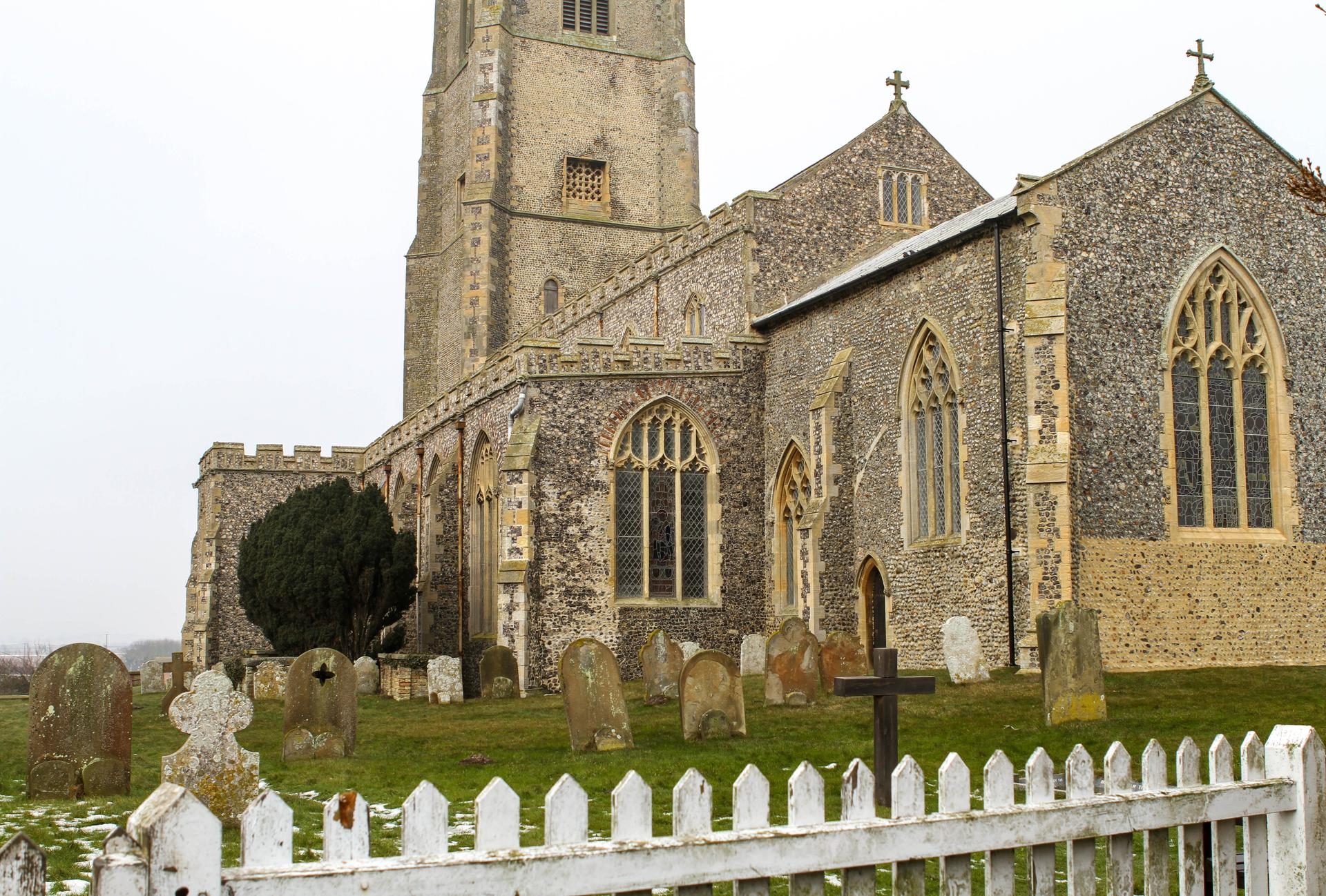
She worries that eventually, she won’t have many places to look when trying to remember her father. But she still wants to leave Happisburgh when she finishes school next spring.
“The sooner I get out of here, the sooner I don’t have to worry as much about the danger of … the cliffs,” Darcy says. “Because at the rate it’s going, I could wake up one morning and I’d be on the edge of the cliff.”
Darcy’s mom Nicola has the opposite instinct. “My husband died here,” she says, “so I’ll stay here till the end.”
The UK government doesn’t offer buyouts to homeowners like Nicola, though money is available to help them demolish their homes before they fall off the cliffs.
Bayless plans to move inland in Happisburgh when the local government tells her it’s time.
But she’s never regretted moving her family to this seaside village when Darcy was a baby, and raising her and her 10-year-old sister Violet here.
“I wanted my children to be able to walk down [the street] and go ‘morning’ and have someone say ‘morning’ back,” explains Nicola. “And that’s what it’s like here.”
Her house may disappear, she says, but the memories of picnics on the beach and happy times with her husband will remain.
“I would not swap any of the memories I’ve had in this house, or in this village, for anything,” Nicola remarks.
The village’s historic core at risk
Clive Stockton estimates he has 25 to 30 years left in business at the Hill House Inn before the cliffs reach the back door of his business, which is listed in the national register as a 17th-century building.
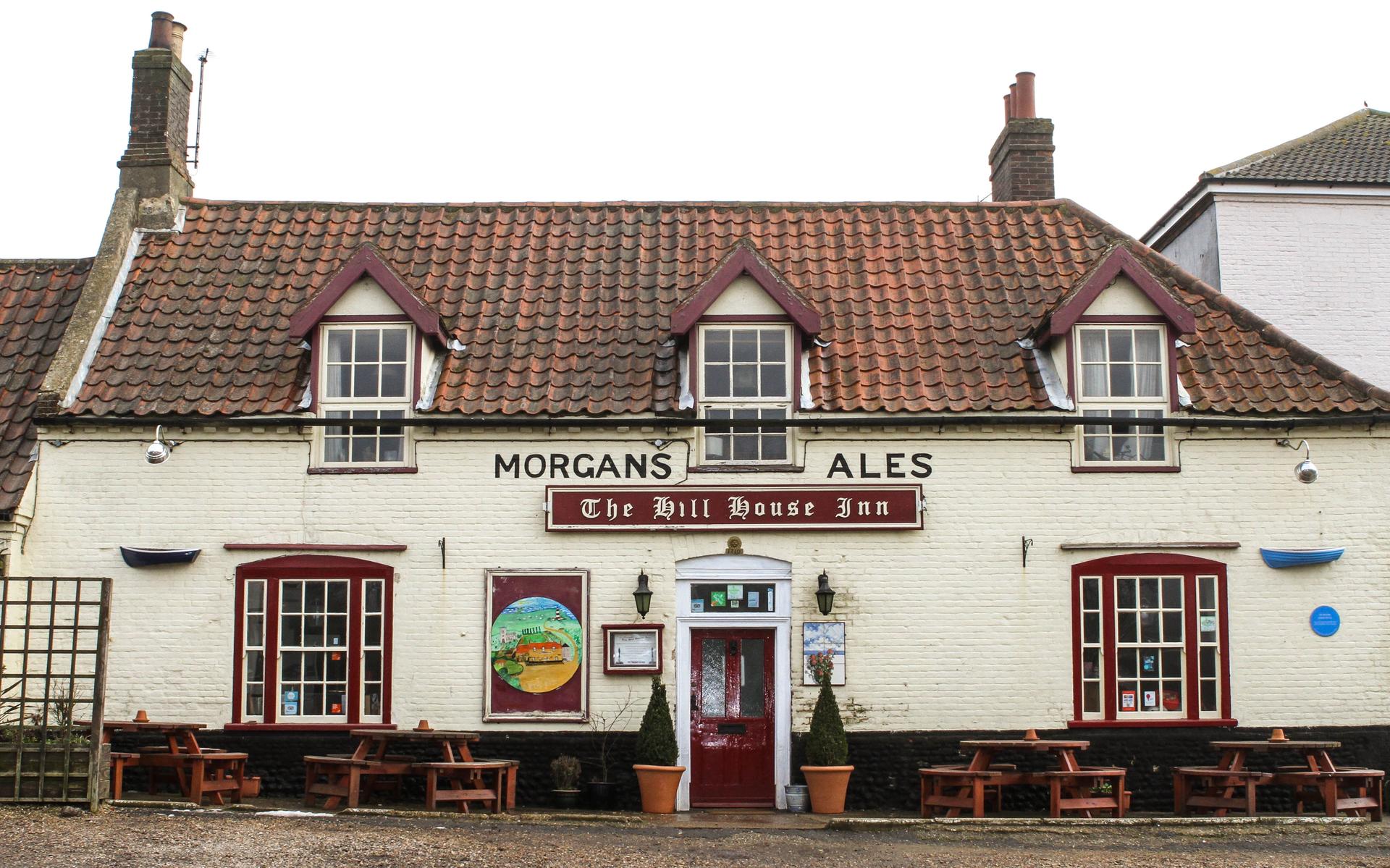
Editor's note: Listen above to the story of how Clive Stockton stopped trying to save his historic Hill House Inn, and decided instead to make the most of it while he still can.
“A lifetime’s work invested in a property that is [historically] listed, so theoretically [it] should be defended,” Stockton says. “But it doesn’t work like that.”
A trailer park and campground that sits between Stockton’s property and the cliffs is being relocated inland starting this fall. It would be prohibitively expensive to do the same with the inn. So Stockton, the Inn’s landlord and managing director, says the property itself isn’t worth much anymore.
“But it’s still a successful business, and we’ve got 25 or 30 years to make some money out of it. So that’s what we’ve accepted,” says Stockton.
He and his wife have expanded the business, adding a coffee shop and brewery named after a Sherlock Holmes mystery that Sir Arthur Conan Doyle reportedly wrote while staying at the inn in the early 1900s.
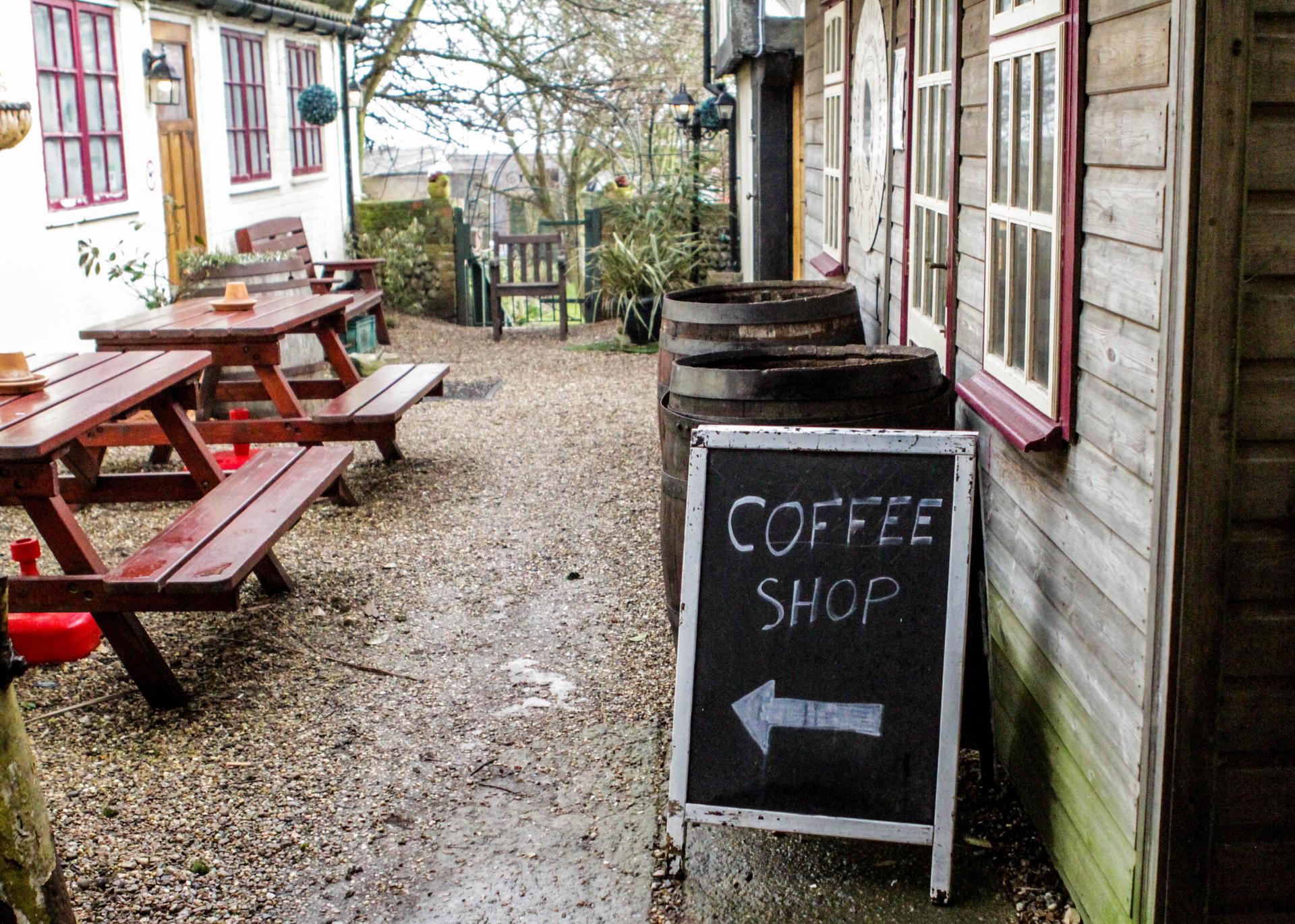
“We’re just determined to make the most of it while it’s still here,” says Stockton.
The inn may outlive Stockton, who’s 69, as will most of the buildings in town which sit farther inland. But the village’s historic core is close to the coast.
“One the pub [and] the church go, then there is a school, there are two small shops and a post office. And that’s it,” explains Stockton. “So Happisburgh will cease to be the lively and active community that it is.”
Our coverage reaches millions each week, but only a small fraction of listeners contribute to sustain our program. We still need 224 more people to donate $100 or $10/monthly to unlock our $67,000 match. Will you help us get there today?
.jpg&w=1920&q=75)